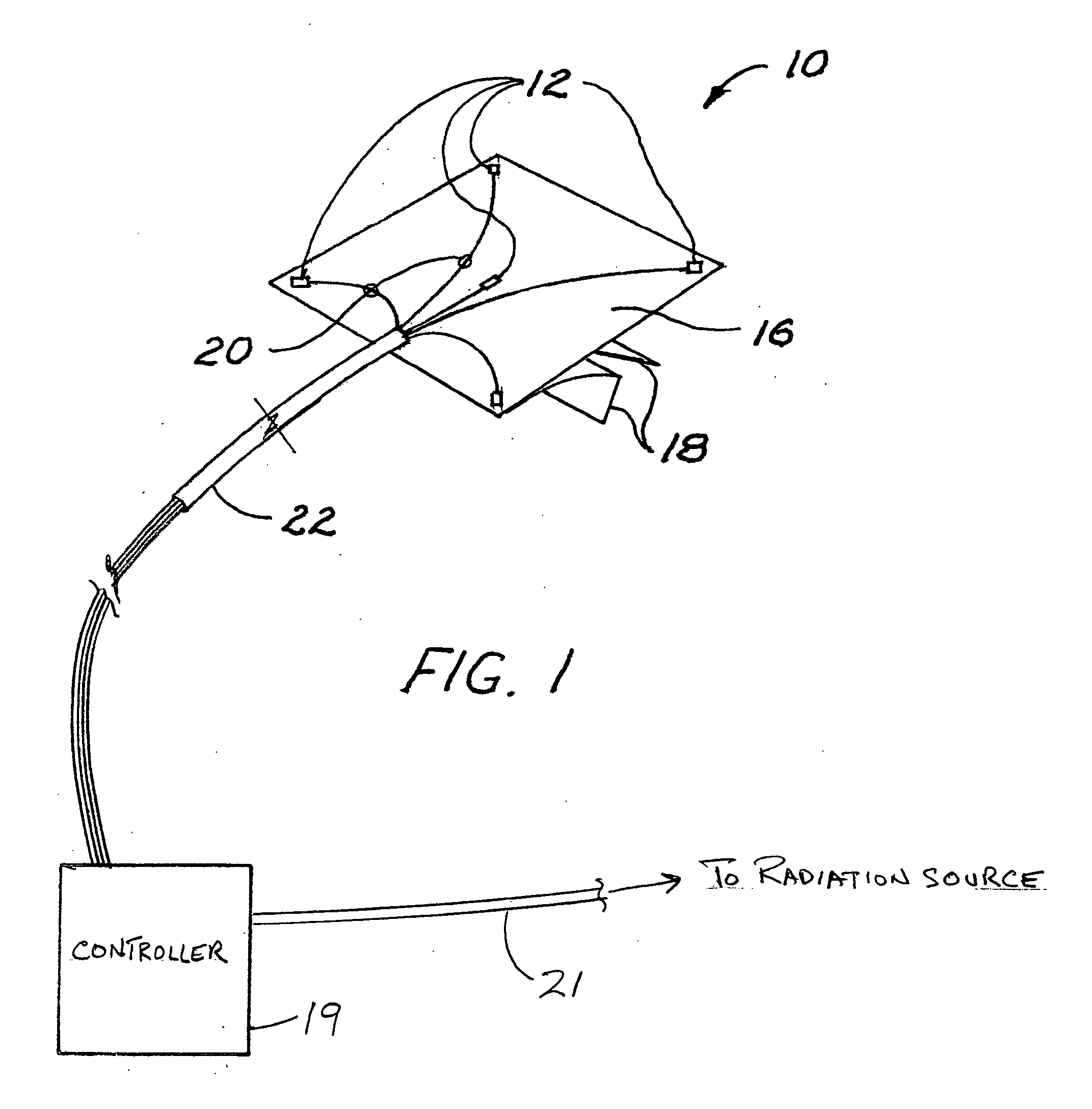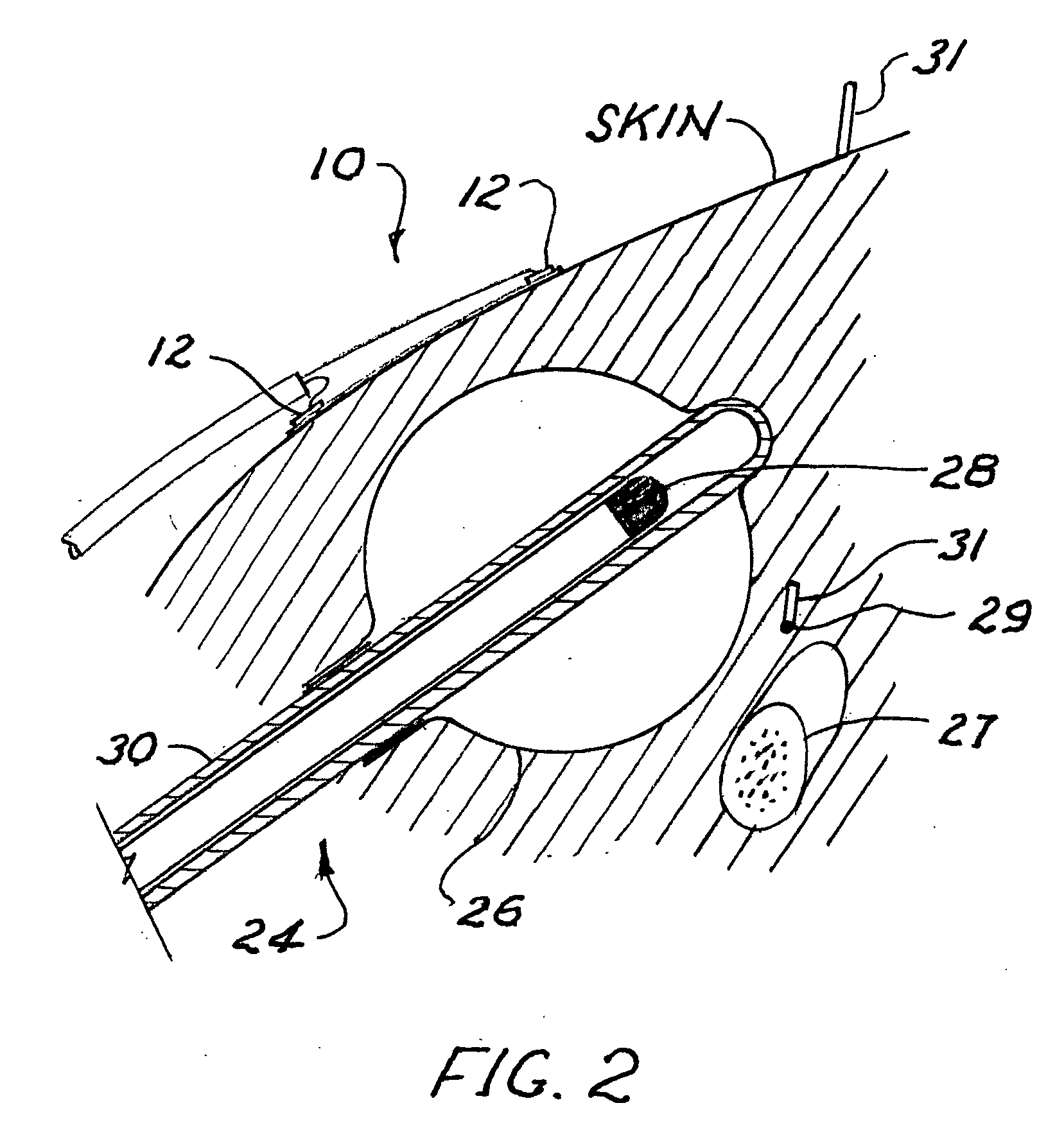Radiation sensor arrays for use with brachytherapy
a technology of brachytherapy and imaging film, applied in the field of brachytherapy, can solve the problems of unsatisfactory cosmesis, affecting the patient's physical anatomy,
- Summary
- Abstract
- Description
- Claims
- Application Information
AI Technical Summary
Benefits of technology
Problems solved by technology
Method used
Image
Examples
Embodiment Construction
[0023]Solid state radiation sensors, including MOSFET sensors, are well known for their ability to measure absorbed doses of radiation. In essence, they are solid-state devices which degrade in response to cumulative exposure to radiation. They are generally connected by wires to instruments which can impose a current across a semi-conductor junction within the sensor, and read the voltage developed across the junction. Depending on the amount of radiation absorbed by the sensor, the voltage changes. Therefore, after a calibration step to establish an initial voltage reading followed by exposure to radiation, the voltage is again read. The change in readings can be correlated to the amount of radiation absorbed between readings. The life of the sensor is limited in that, once exposed to its limit exposure, it cannot be rejuvenated and must be discarded. Within the exposure ranges commonly used in radiotherapy, however, MOSFET sensors and other solid state sensors have great utility....
PUM
 Login to View More
Login to View More Abstract
Description
Claims
Application Information
 Login to View More
Login to View More - R&D
- Intellectual Property
- Life Sciences
- Materials
- Tech Scout
- Unparalleled Data Quality
- Higher Quality Content
- 60% Fewer Hallucinations
Browse by: Latest US Patents, China's latest patents, Technical Efficacy Thesaurus, Application Domain, Technology Topic, Popular Technical Reports.
© 2025 PatSnap. All rights reserved.Legal|Privacy policy|Modern Slavery Act Transparency Statement|Sitemap|About US| Contact US: help@patsnap.com



